Communion brings all Christians to the table
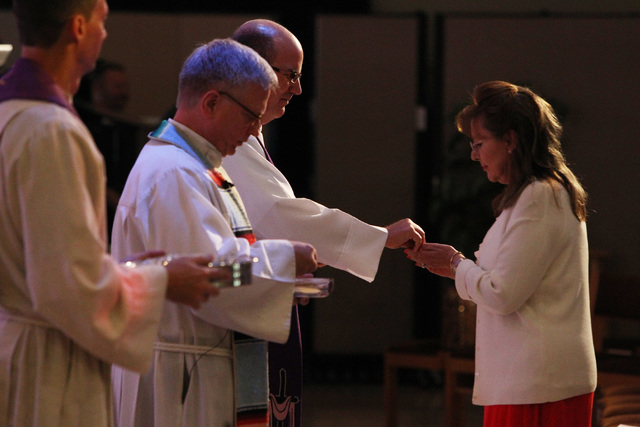
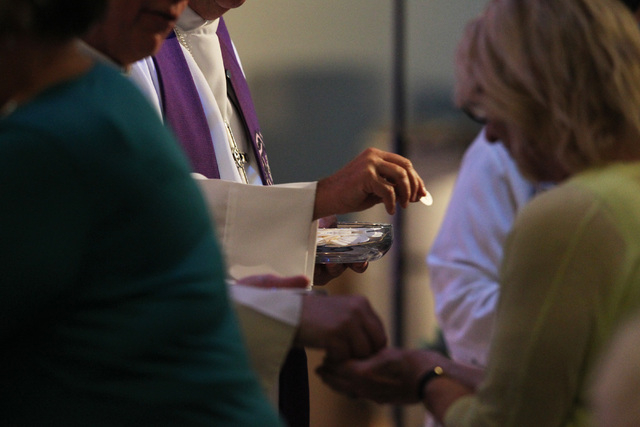
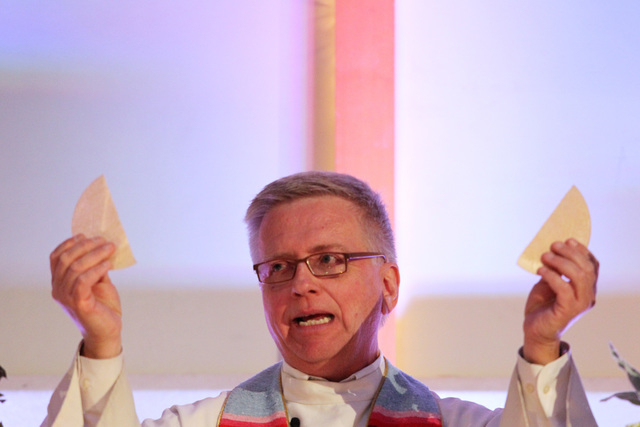
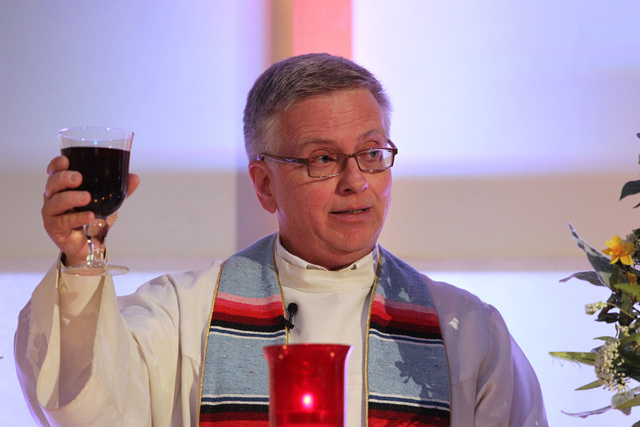
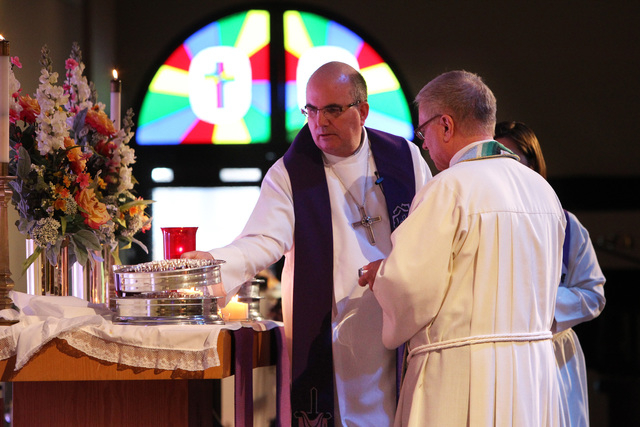
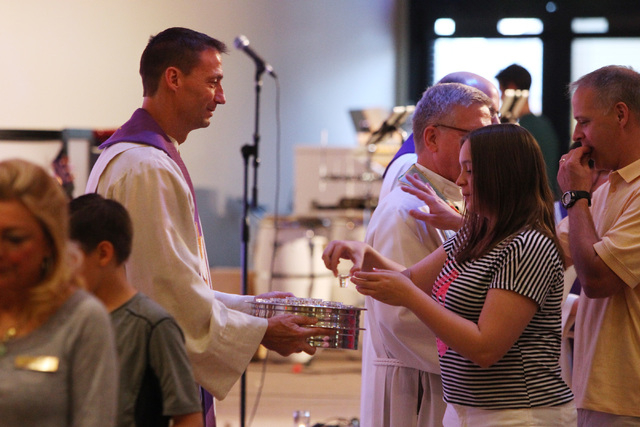
While most Christians agree on the big issues — most importantly, on the divinity of Jesus — there’s still much that continues to separate Christian churches from one another.
Practices and rituals. Observances of significant days. How salvation works and what is, and isn’t, required for it. And, of course, hundreds of fine, and not-so-fine, points of theological belief.
But there’s one practice that almost every Christian tradition and denomination can agree on: Communion. And whether it’s called Communion, the Lord’s Supper, the Eucharist or simply the Sacrament, the taking of bread and wine during worship remains a hallmark practice for just about every subdivision of Christianity.
The Rev. J. Barry Vaughn, rector of Christ Church Episcopal, notes that “virtually all” Christians share “two sacraments, the ritual of baptism and Communion.”
And in every Christian denomination, says the Rev. Jim Houston-Hencken, senior pastor of Grace Presbyterian Church, the practice of Communion is “born out of the Last Supper, where Christ took the cup and the bread and said, ‘Do this in remembrance of me.’ In all of the Christian traditions I’m aware of, we re-enact the Last Supper as a way of reliving Christ’s last meal with his disciples.”
Through the taking of Communion, believers participate in that particular moment, Houston-Hencken adds, and “experience Christ’s Last Supper through our actions.”
However, exactly what happens when bread and wine are consecrated or blessed for Communion varies among faith traditions. In the Orthodox church, for example, “the Eucharist is the true body and blood of Christ,” says the Rev. John Hondros, pastor of St. John the Baptist Greek Orthodox Church. “Physically we see bread and wine, but mystically and truly we receive the very body and blood of Christ, and we receive it for the forgiveness of our sins and for life eternal.”
Similarly, the Roman Catholic Church believes that the bread distributed at Communion “is the actual body and blood of Christ,” says the Rev. Gerald Grupczynski, pastor of Our Lady of Las Vegas Roman Catholic Church, and “the bread and wine transubstantiates into Christ’s body and blood, which means the appearance of it stays the same but the substance of it changes to (Jesus’) actual body and blood.”
In contrast, other Christian traditions consider the bread and wine “symbols or signs of (Jesus’) body and blood,” Grupczynski says. “They don’t believe, as we do, that it actually is the body and blood.”
The Rev. Don Lorfing, senior pastor of Good Samaritan Lutheran Church, says members of some nondenominational churches believe that the bread and wine serve as “representations (about) what Christ did, and even some of the mainline (churches) fall into that,” while other churches stake out a more middle ground.
In the Lutheran church, “the way we look at it is, Christ is present in the meal,” Lorfing says. “It’s not just a symbol, but the bread and wine does not become the body and blood. He is present … but the elements do not become his body and blood. So it’s more than symbolic. It’s very real. Christ is present.”
In the Anglican tradition, “we leave it up to the individual worshipper to decide what he or she believes,” Vaughn says, adding that there’s “not one word in any of our canons or prayer books that will tell you what it is. And, honestly, I like that.”
In the Church of Jesus Christ of Latter-day Saints, the bread and wine are “symbolic,” says Kevin Beck, bishop of the church’s Pinnacle Ward in the Spring Mountain Stake.
“For us, it is a symbolic thing and helps us remember the physical suffering that (Jesus) went through and his atonement for us,” Beck says.
Christians believe that the institution of Communion occurred three days before Easter on what some Christians refer to as Holy Thursday or Maundy Thursday. Maundy, Lorfing explains, comes from the Latin word “maundatum,” or “command,” and refers to Jesus’ command to his disciples during the Last Supper to “love one another as I have loved you.”
The Eucharist — from a Greek word that means “thanksgiving” — is “the central sacrament in the Orthodox church,” Hondros says. “For us, the whole reason we are baptized into the church in the first place is so that we can become communicants within the body of Christ.”
Taking of the Eucharist is offered at least once a week during Divine Liturgy services, and also on feast days and saints days, Hondros says. Similarly, the opportunity to receive Communion is part of every Catholic Mass, while Beck says what LDS members know as the Sacrament is administered each Sunday and represents “the focal point of our meetings.”
Conversely, some Protestant and nondenominational churches don’t offer what they refer to as the Lord’s Supper at every service. Houston-Hencken says his church offers at least one service each week at which the Lord’s Supper is offered, although “that’s not true of all churches in our tradition.”
The mode of delivery also varies among denominations and even among churches within denominations. The bread may take the form of unleavened hosts or pieces of leavened bread, while the wine may be actual wine, grape juice or, at LDS Sacrament services, water.
Then, Houston-Hencken says, “some churches (administer) Communion by intinction, which is a fancy Christian word for ‘dipping.’ And when we do that, people generally use a bread that comes in a loaf and you’re just tearing off a piece and dipping it into the cup.”
Grupczynski says it’s probably no accident that, in the Christian Gospels, Jesus is recorded as having used bread and wine to institute Communion. Both, he says, were just everyday staples of his life.
“I always tell people, if Jesus wanted it to be something else, he would have used Champagne and caviar as signs, but he used bread and wine, which were everyday food,” Grupczynski says. “So Jesus meant for it to be something used often and every day. It’s not just something that’s put away for special occasions.”
Similarly, bread and wine serve as “tangible reminders of what Christ did,” Lorfing says. “You can feel the bread. You can taste the wine. It’s something tangible. As human beings, we are very touch-oriented. Every time you touch this, there is a reminder of the meaning of what he did.”
One argument offered in favor of not offering the Lord’s Supper at every service is that such regularity could “lessen its significance,” Houston-Hencken says. “I can tell you, I’ve heard the argument, but the more we do it, the more requests I have for it. So it’s my experience that familiarity breeds interest, not contempt.”
Beck says he has seen LDS worshippers “in tears as they partake of the Sacrament.”
“It’s different for every person,” Vaughn says, “but it’s a lot more than just a chance to get up and stretch your legs.
“A sermon can be good, bad or indifferent, and depending on whether you’ve slept or how tired you are or how alert you are, you can miss a lot of the sermon,” Vaughn says. “But there is something objective about the sacrament.
“We can be asleep or tired or alert, but it doesn’t matter. God is here to meet us.”
Contact reporter John Przybys at jprzybys@reviewjournal.com or 702-383-0280 or follow him on Twitter: @JJPrzybys.












